We are living in the Age of Hyper-Innovation, in which more world-changing innovations will be developed in the next 10 years than were produced in the previous 100 years. The two primary drivers are increasing intellectual capital (knowledge) and a low-friction, global information infrastructure.
Since the beginning of the industrial revolution, innovation has come in waves. Each wave starts with a new disruptive technology (water power, steam power, electricity, oil, electronics, networks, etc) that creates tremendous new wealth and social benefits and then ends in a global recession. But each wave builds on groundwork created in the previous wave, so each new wave is larger and comes faster.
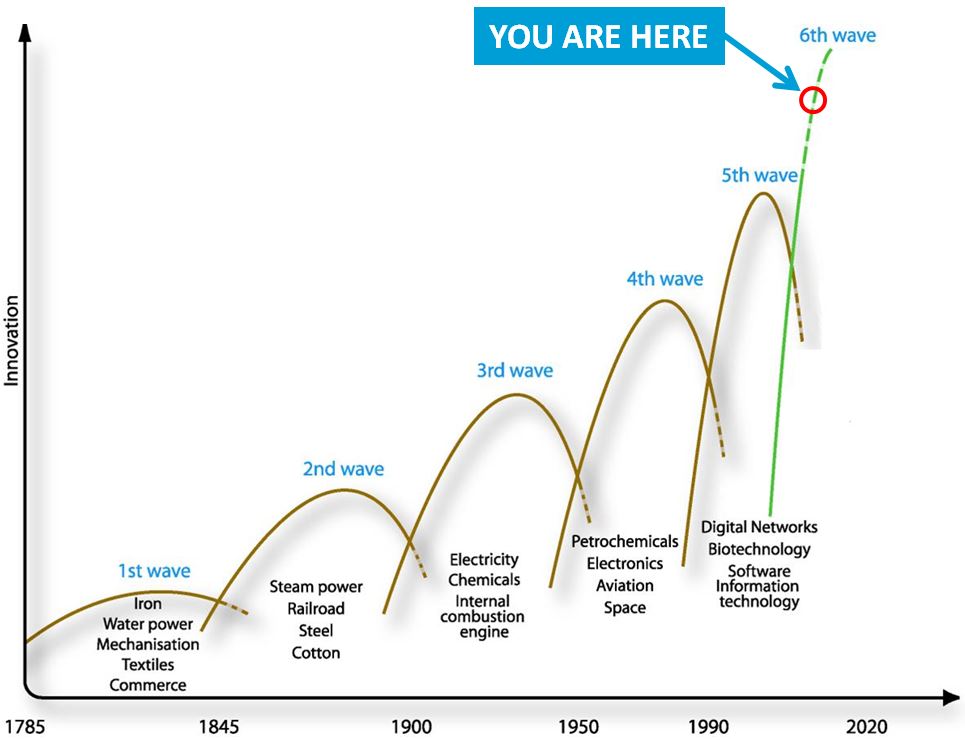
These innovation waves led Joseph Schumpeter to his famous theory that capitalism is fundamentally an evolutionary process of “continuous innovation and creative destruction.”
We are now entering the sixth wave of innovation and destruction since the industrial revolution. This sixth wave has the potential to break with the past pattern of innovation, and create an entirely new tempo and magnitude of innovation waves.
Welcome to the Age of Hyper-Innovation.
But why should the sixth wave represent a “quantum leap” from the normal rate of acceleration to Hyper-Innovation?
One of the crucial differences from the past is the tremendous rate of growth in the size of the educated and connected global population. The increase in the amount of global “human capital” – knowledge workers who have strong minds, not just strong backs – creates many more discoverers, creators and innovators. And the connected world enables these discoveries and inventions to rapidly spread throughout the globe, where more innovators can use them as launch pads for new innovation. This feedback loop is responsible for the discontinuous accelleration.
Futurist Buckminster Fuller created the “Knowledge Doubling Curve” when he noticed that before the year 1900 it took between 100 to 200 years for the total amount of human knowledge to double. But by the end of World War II in 1945 the rate of knowledge creation had accelerated significantly and human knowledge doubled every 25 years.
Some predict the rate of knowledge growth to continue to accelerate, reaching an incomprehensible rate of doubling of every 72 days by the year 2020. At that rate the amount of human knowledge would increase over 1,000 times in just two years (720 days).
In addition to having more core knowledge to work with, the advancement of affordable computers, digital storage, and the World Wide Web has dramatically increased each person’s effectiveness many fold.
Obviously this environment of rapid change has an impact on companies trying to acquire and retain market share. Here are the top 10 implications of life in the Age of Hyper-Innovation:
Intellectual capital is more important than physical or monetary capital.
Intellectual capital (also known as knowledge, to those who are less committed to sounding highfalutin) is now more important than physical or monetary capital. It is the new primary source of value creation.
Here’s how Walter Wriston, former Chairman and CEO of Citibank put it:
What does this mean? It means that it is now easier for two college students in a dorm room to create a product that topples an industry than it is for huge companies to lock out competitors and prevent disruption (see our page Lock Out is Out, Lock in is In). Having control of the money, the machines, the land and the resources is no longer a guarantee that you’re in control of wealth production. You have to have the knowledge and the ability to put it to work. ((This has had an interesting impact on labor relations. Have you ever wondered why nurses and professional athletes have unions while computer programmers and advertising professionals do not? It it because a small group of programmers can start their own software company at any time, just like a couple of creatives can start a new agency. But there is no way that a couple of young, bright nurses are going to quit and start their own hospital, and two football players can’t start a new league to compete with the NFL. But even these industries are subject to disruption; two nurses could invent a new medical device that disrupts how hospitals work.))
The important point is that knowledge is not just power. In the Age of Hyper-Innovation, knowledge is also the source of wealth creation.
Boundaries are blurred.
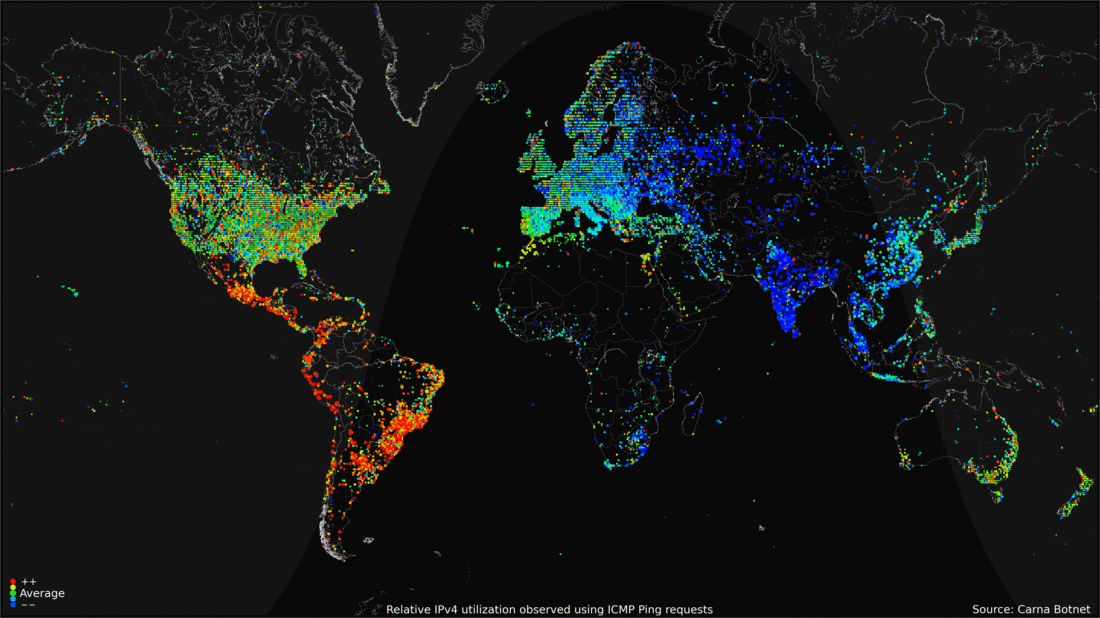
Barriers that used to keep markets apart are blurring as the whole world becomes more and more connected, 24 hours a day. This includes geographical, language, cultural, economic, and product category boundaries. These barriers used to protect companies from new competition. In the Age of Hyper-Innovation, as boundaries fall, new competitors can come from anywhere.
New products can be created more cheaply and faster than ever before.
We are now entering a Golden Age of Innovation where digital tools like 3D design and printing allow new products to go from concept to market faster and more cheaply than ever before. This will accelerate the growing product proliferation trend where there is more of everything. Hyper-Innovation leads to Hyper-Product creation, where fortunes can be made (and lost) almost overnight.
Markets are getting bigger.
As boundary lines blur and barriers shrink, the addressable market for every company becomes global. Once selling into a global market was a privilege limited to only huge transnational companies. But in the Age of global Hyper-Innovation even start-ups have global ambitions and the means to achieve them.
For example: Start-up AirBnB, an internet company that creates a global market for people to find and rent rooms, has become an international phenomenon.
Markets are getting smaller.
As it gets cheaper to create new products or add new product features, companies can expand their product mix into the “Long Tail” more economically. This will create an increase in finely differentiated products targeting micro-niches. Burger King was right: you can now finally “have it your way.” As an executive from Proctor & Gamble told us, “We used to think that a product had to be able to achieve 50% market share to be a success. Now our success us built on products that achieve 5% market share.”
The term long tail (http://en.wikipedia.org/wiki/Long_tail) has gained popularity in recent times as describing the product strategy of selling a large number of unique items with relatively small quantities sold of each. Chris Anderson elaborated the concept in his book The Long Tail: Why the Future of Business Is Selling Less of More.
A negative implication of this abundance of variation is that more products, more choices, and more competitors also means more noise. It may become harder and more expensive to advertise your message, driving customer acquisition costs up.
Markets are faster and more efficient.
We use the concept of “Market Viscosity” to describe how fast information can travel through a market and how quickly and accurately the market can respond to new information and new innovations. While slow moving markets were an impediment to selling new products they were a benefit to established incumbent products because they dampened the impact of innovations.
Those days are fading rapidly as we enter the age of Hyper-Information; markets are becoming less viscous and more reactive now that everyone anywhere has access to the same up-to-the-minute information and social analysis.
This is great news for innovators: a video of a better mouse trap on YouTube or KickStarter can go viral globally in a matter of days, and customers around the world can order online. It also means that incumbents have to step up their game to stay relevant.
The lifespan of even the most innovative and successful products is shorter than ever before.
In the Age of Hyper-Innovation, even when you do create an amazing product, it’s profitable lifespan is shorter.
For example, Blockbuster Video was a cash cow for 25 years. Nextflix disrupted this market in 2002 by offering better pricing and service based on a business model innovation: DVD-by-mail delivery. But by 2011 Neflix had to disrupt itself in order to maintain market share. The profitable lifespan of Netflix’s original product was less than half that of the predecessor it disrupted.
The lifespan of companies is shrinking.
In the Age of Hyper-Innovation, people live longer. The average human lifespan has increase from 61 years in 1937 to over 77 years today.
But, companies die younger:
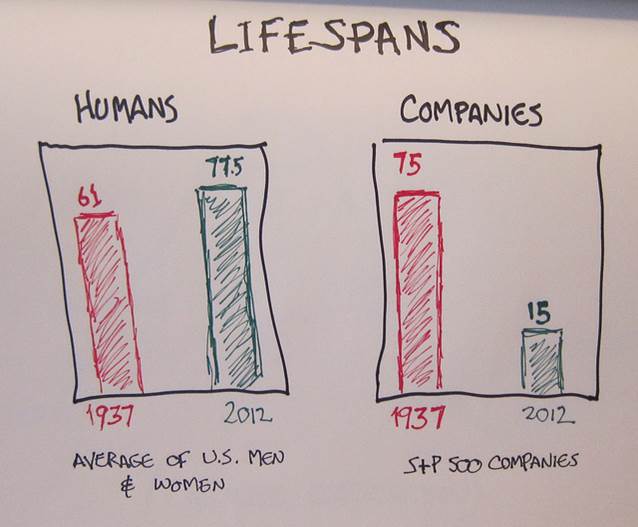
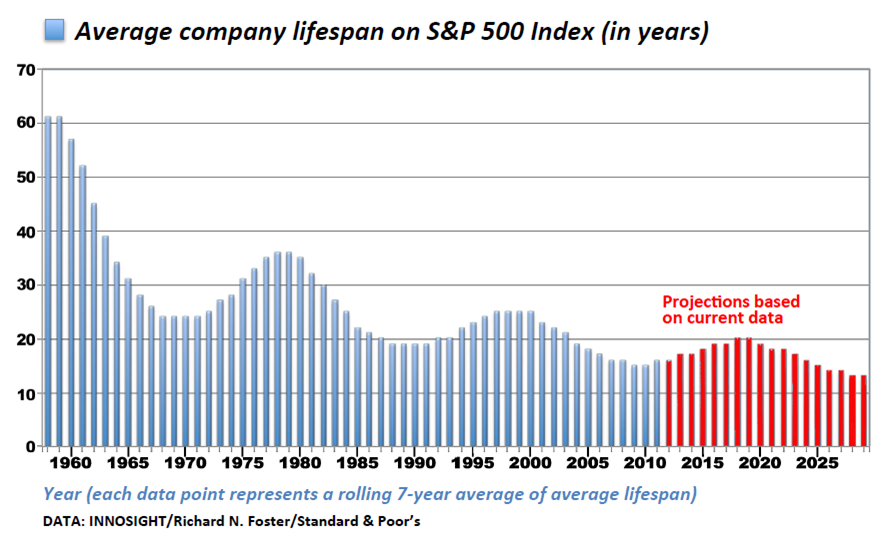
Every industry, company, and product will undergo significant change or face disruption.
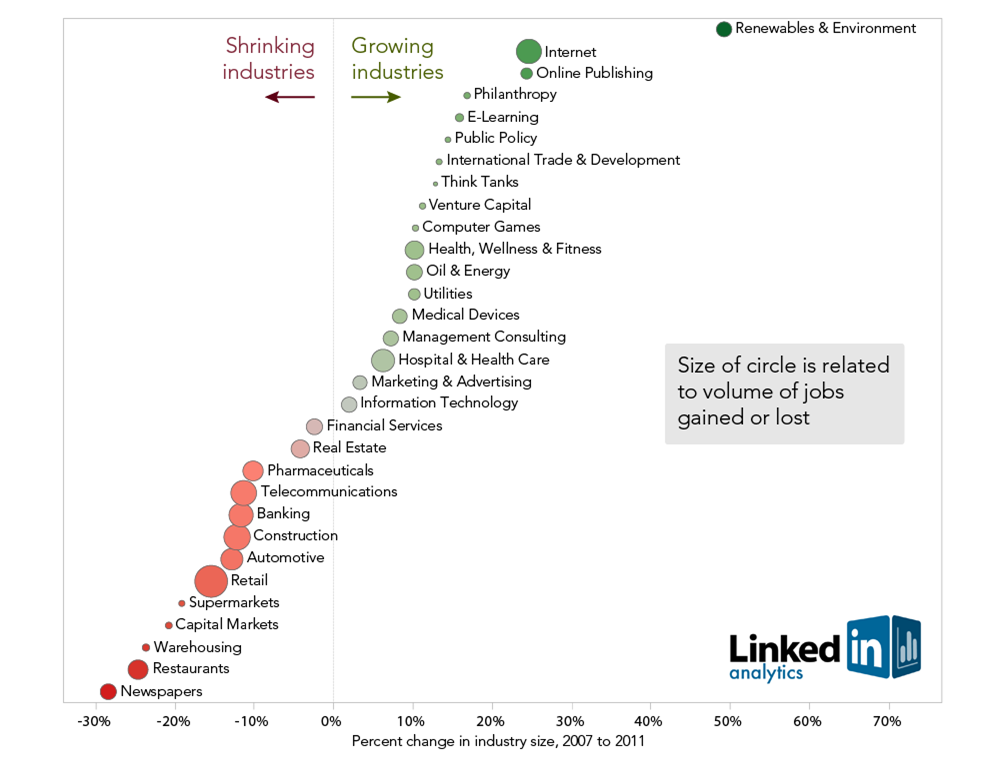
You’re next.
The First Law of Disruption is: Disruption Comes to us All. But those companies that understand and embrace the implications of the Age of Hyper-Innovation and develop sound innovation strategies will thrive. The first step is understanding the fundamentals of how disruptive innovation happens.
NEXT: The Three Laws of Disruption
The idea of two nurses spinning-off to create their own hospital is fun. It reminds me of the “doc-in-a-box” that used to be in Santa Cruz in the 80’s, and suggests that a neighborhood nurse could be enabled by companies like Scanadu almost like Geek Squad for health. If most common maladies could be accurately diagnosed with technology, then the value of a calm and wise nurse might actually be high enough to keep one busy in an urban neighborhood.
Great points, and your example highlights one of the ways disruption happens. While two nurses could not quit and start their own hospital, they could independently offer part of what a hospital provides, and maybe do a much better job at it.
A great and still very relevant article. Thanks for this. Cryptocurrencies are beginning to blur and blend the notion of wealth, knowledge and computing. I believe that the blockchain….will change the world and recode how we create, store, define and value wealth.
Thanks for your thoughts and the kinds words, Joseph. What would you say are the value dimensions driving the adoption (or not) of cryptocurrencies? Privacy, transaction costs, convenience, reliability?